Trekking poles have become as common on hiking trails as water bottles and backpacks, but there’s still plenty of debate about whether they’re worth the extra weight and hassle.
While some hikers swear by them for stability and joint protection, others see them as unnecessary extras that just get in the way.
I’ve spent many hours testing poles on everything from gentle nature walks to steep mountain scrambles.
Let’s break down what makes these hiking aids either trail heroes or pack weight zeros.
No time right now to learn the pros and cons of trekking poles ? Pin It and save it for later:

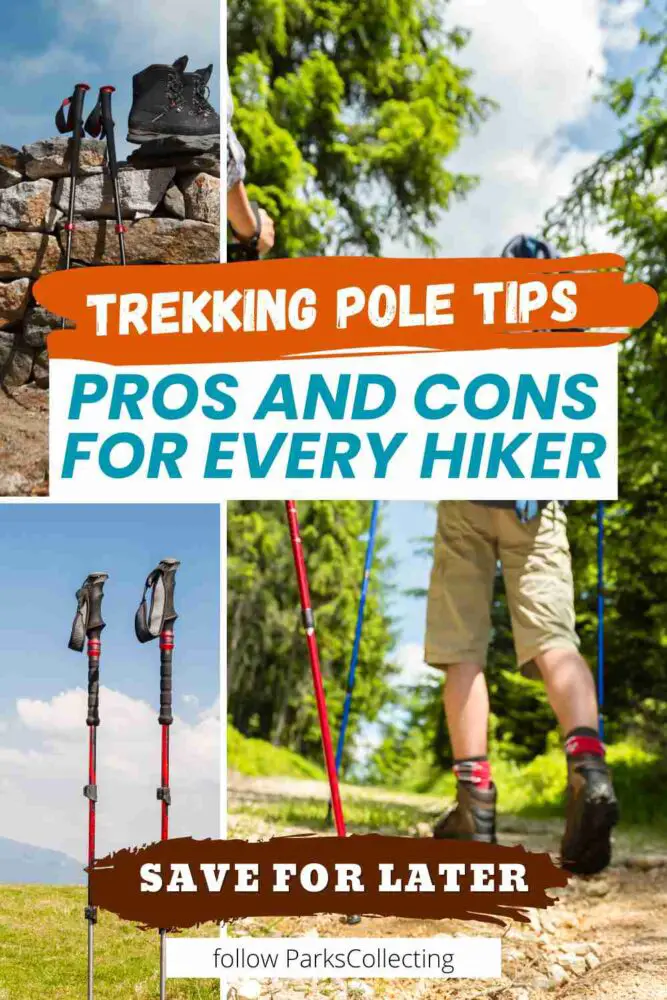
These are the ones I own and use for day hikes:
Subscribe to daily national parks planning tips, travel inspiration and trip ideas and I’ll send you a free PDF of this Guide:
Pros and Cons of Trekking Poles: What You Need to Know
Table of Contents
What Are Trekking Poles?
Trekking poles are hiking tools that look like ski poles and help distribute your weight when you’re on the trail. I’ve seen more and more hikers using them over the years, and they’ve become standard gear for many backpackers and day hikers alike.
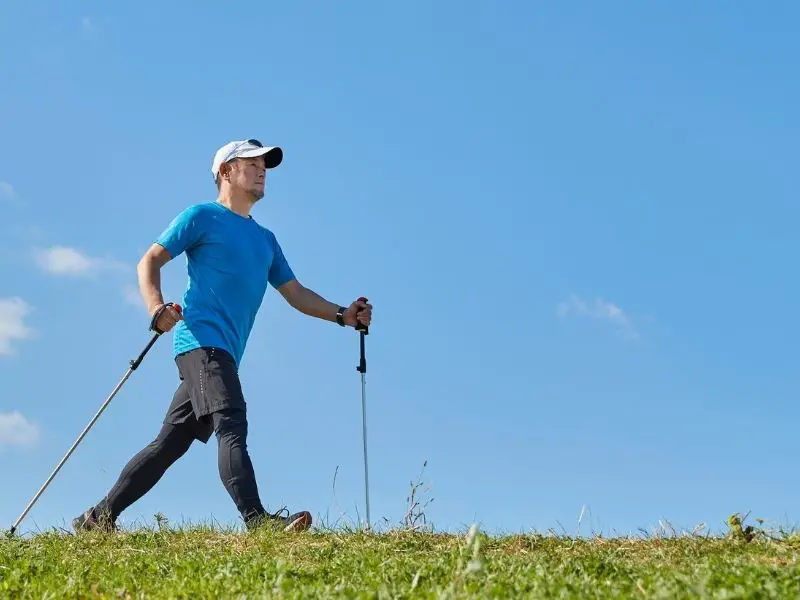
These hiking aids come in different styles – you’ll find adjustable ones that let you change the length, fixed poles that stay one size, and some that fold up or telescope down for easy storage. The most common type I see on trails are telescoping or tri-fold poles with flick locks that you can adjust quickly when the terrain changes.
Most poles are made from either aluminum or carbon fiber. Aluminum poles are tough and will bend instead of break if you really stress them. They’re usually cheaper too. Carbon fiber poles are super light (sometimes under 4 ounces each) but can snap if they take a hard hit.
The grips come in different materials – cork is my favorite since it feels nice and wicks away sweat, while foam is comfortable but wears down faster.
When you’re hiking, you move the poles in rhythm with your steps. As your left foot goes forward, your right pole plants, and vice versa. It becomes natural pretty quickly.
I adjust mine shorter for uphill sections and longer for downhill parts. Some hikers use just one pole, while others prefer two – it really depends on what feels right to you and the type of terrain you’re tackling.
On flat ground, poles might seem unnecessary, but they really shine on steep trails, water crossings, and sketchy terrain where you need extra balance points. They also double as tent poles for some ultralight shelters, which is pretty neat if you’re trying to keep your pack weight down.
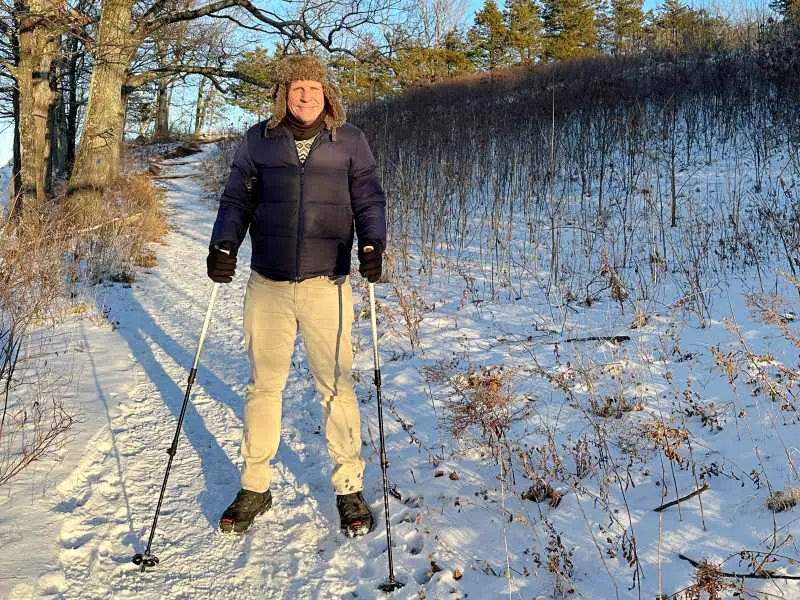
Basic Uses of Trekking Poles in Hiking
Trekking poles are especially useful when you hit tricky terrain.
On steep downhills, they take pressure off your knees by absorbing shock – some studies show they can reduce impact force by up to 20%. I’ve found this really helps me hike longer without getting sore knees.
When you’re climbing uphill, poles let you use your arms to help push yourself up. This spreads out the work across your whole body instead of just burning out your legs.
Plus, using poles gets you into a steady rhythm that can actually make you faster – some hikers report moving at 2 MPH with poles compared to 1 MPH without them.
Balance is a huge benefit too. Having four points of contact instead of two makes a big difference when you’re crossing streams or dealing with slippery rocks. I use my poles to test water depth before stepping in, and they’ve saved me from falling more than once on icy patches.
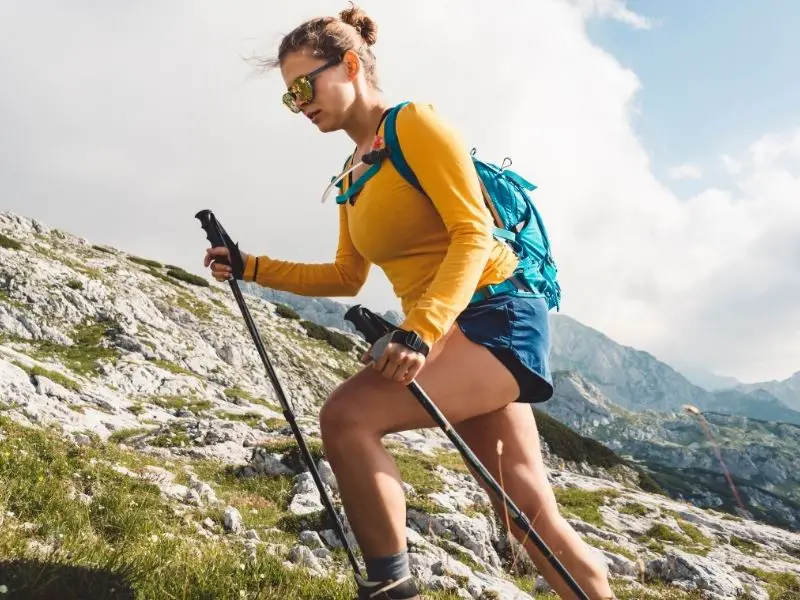
Most poles are pretty versatile. You can adjust your grip position based on the terrain – hold them lower on steep climbs or higher when traversing slopes. They’re great for clearing spider webs off the trail (something I do all the time), and they can even help scare off wildlife by making you look bigger or creating noise.
A lot of ultralight backpackers use their poles to set up their tents at night, which saves weight since you don’t need separate tent poles. This dual-purpose use makes the small weight penalty of carrying poles (usually 1-2 pounds) worth it for many hikers.
Weather conditions really affect how useful poles are. In rain or snow, they give you extra stability. Even on regular trails, they help maintain good posture and keep your hands from swelling up on long hikes by improving circulation.
Advantages of Using Trekking Poles
I’ve found trekking poles offer a huge stability boost on the trail. With two extra points of contact, I feel way more confident crossing streams or tackling steep terrain. They’ve saved me from slipping countless times, especially on loose gravel or wet rocks.
The biggest win for most hikers is how poles protect your joints. When you’re going downhill, they take a lot of weight off your knees – we’re talking about 20-70% less impact force. As someone who likes long hikes (and who doesn’t have the best knees), I really notice the difference at the end of the day when my knees aren’t screaming at me.
Your walking form gets better too. Fixed or adjustable poles naturally keep you upright and get you into a smooth walking rhythm. I’ve noticed I can keep a steady pace for longer when I use them, and my hiking buddies say the same thing. Plus, your arms and shoulders get a nice workout instead of just hanging at your sides.
Speaking of energy, poles help spread out the work across your whole body. Your legs don’t have to do all the heavy lifting, which means you can hike longer before getting tired. When I’m climbing uphill, I use my arms to help push myself up, and it makes a big difference in how fresh I feel at the top.
They’re especially helpful in tricky spots. When I’m crossing a stream, I can test the depth and stability of rocks before stepping. On steep uphills, I lean on them slightly to help power up the trail. On narrow trails with a drop off on one side, I use them to stabilize me so I feel more comfortable. Even on flat ground with a heavy pack, they help me stay balanced and keep good posture.
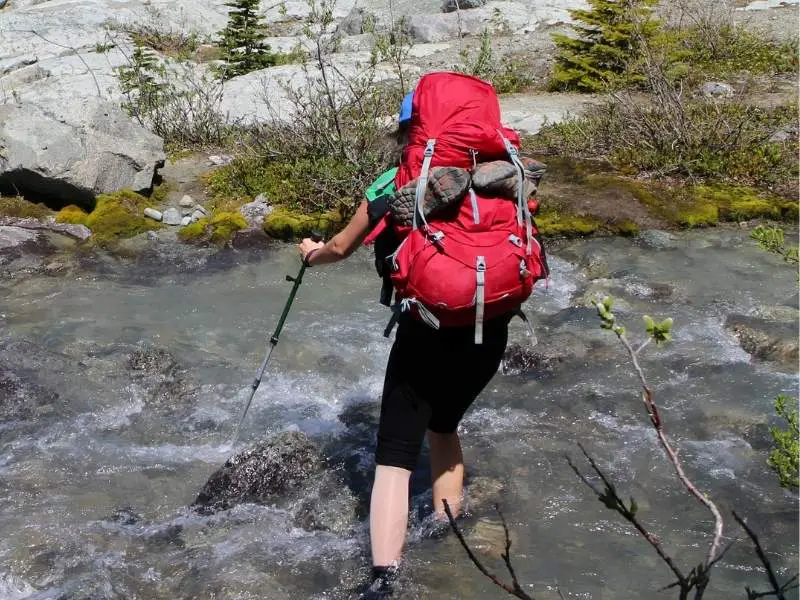
Another bonus is how they keep my hands from swelling up on long hikes. The pumping motion helps blood flow, and I don’t get that uncomfortable puffy feeling in my fingers anymore. They’ve really changed how I hike, making tough trails feel more manageable and letting me cover more ground with less fatigue.
Disadvantages of Using Trekking Poles
Trekking poles aren’t perfect – they do add weight to your pack. Even the lightest carbon fiber models still tack on about a pound total, and heavier aluminum ones can add up to 2 pounds. When you’re trying to keep your pack light, that extra weight matters.
I’ve noticed some hikers get too dependent on their poles. When you use them all the time, you might not develop the natural balance and stability that comes from hiking without them. I usually leave mine at home on shorter trails just to maintain those basic hiking skills.
The price can be a real shock too. While you can find cheap vs expensive poles for around $60, the nice carbon fiber ones with cork grips can run you $200 or more. Sure, the expensive ones are lighter and more comfortable, but that’s a big investment if you’re just starting out.
There’s definitely a learning curve when you first start using poles. It took me a while to get the rhythm down and figure out the right height adjustments for different terrain. Some of my friends gave up on poles because they felt awkward using them at first.
Poles can actually be a pain in certain situations. When you need your hands free for scrambling up rocks, you have to figure out what to do with them. Even on flat ground, they sometimes feel more like a hassle than a help. I often find myself stashing them on my pack during easy sections, which kind of defeats the purpose of carrying them.
They can also get in the way when you’re trying to take photos or grab something from your pack. It’s annoying to constantly store and retrieve them, especially if your backpack doesn’t have good pole attachments. And in tight spots on the trail, like between rocks or through dense brush, poles can actually slow you down more than help.
Summary of Pros and Cons
Pros
- stability
- protect your joints
- better walking form
- spread out the effort across your whole body
- helpful in tricky spots
- keep your hands from swelling up
Cons
- add weight
- you can become too dependent on them
- can be expensive
- earning curve
- can be inconvenient
- can get in the way
Considerations and Conclusions
Overall, I definitely recommend them. I hiked for a long time without them and then when I started using them, couldn’t believe I’d waited that long!
However, I don’t take them on EVERY hike. They get in the way on rock scrambles and seem unnecessary on very flat trails – for me, anyways.
If you’re thinking about getting trekking poles, start by looking at your typical trails and hiking style. For casual day hikes on well-maintained paths, you might not need poles.
But if you tackle steep trails, carry a heavy pack, or hike long distances, poles could make a big difference in your comfort level. For long trails like the Appalachian Trail or steep mountain hikes, I’d go with lightweight carbon fiber poles like these Black Diamond carbon poles – they’re worth the extra money when you’re covering serious miles.
For weekend hiking and day trips, aluminum poles work great and won’t break the bank.
For backpacking, pick poles that can adjust easily. I like the flick-lock style because you can change the length quickly even with gloves on.
Your fitness and any existing joint issues play a big role too. As I get older, my knees aren’t what they were and I find relief using poles, especially on downhill sections. Even if you’re in great shape, poles can help prevent fatigue on longer hikes and keep you going strong when others start to tire.
Money-wise, you don’t need to spend $200 on expensive poles right away. I started with basic poles that cost around $60, and they worked fine for learning. I used to have these Foxelli Carbon Fiber ones.
I currently have these Leki Jannu ones. They’re at the low end of the Leki range, so are actually still mid-range in terms of price. They’re aluminum, but they work great for day hikes.
The terrain you hike most often should guide your choice. If you mostly do local day hikes, basic poles will do the job. But for backpacking trips or mountain hikes, investing in lighter, more durable poles might be worth it. I recommend carbon poles for longer, more challenging trails.
Think about your hiking goals too. If you’re planning to increase your mileage or tackle harder trails, poles can help you build up to those challenges safely. They’re especially helpful when you’re learning to handle different types of terrain or starting to carry heavier packs.
Pay attention to how your body feels after hikes. If you notice knee pain, balance issues, or get tired quickly, poles might help. But if you feel stable and comfortable without them, you might not need them yet. Remember – there’s no rule saying you have to use poles all the time. Many hikers, including me, sometimes leave them home for short, easy trails.
Subscribe to daily national parks planning tips, travel inspiration and trip ideas and I’ll send you a free PDF of this Guide:
Pros and Cons of Trekking Poles: What You Need to Know
Final Thoughts on Trekking Poles
After years of hiking with and without poles, I’ve found they’re like most gear choices – there’s no one-size-fits-all answer. They can be game-changers for joint protection and stability on tough trails, but they’re not essential for every hiker or every trail. The extra weight and learning curve are real considerations.
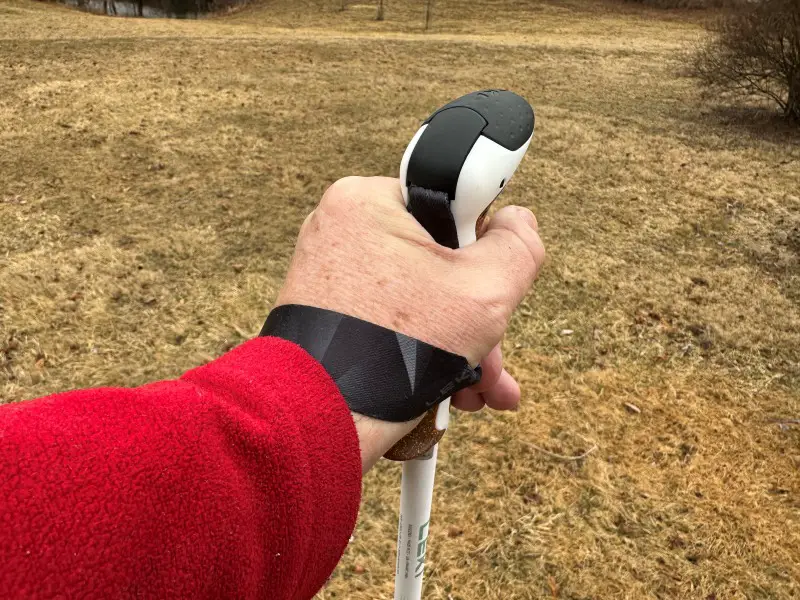
If you’re dealing with knee issues, tackling steep terrain, or carrying heavy packs, poles might be worth trying. Start with an affordable pair to test them out. You can always upgrade later if you find yourself reaching for them on every hike. Remember, the best gear is what works for your specific hiking style and needs.
Read More:
➡️ How to Choose Hiking Poles
➡️ Review of my Leki Jannu Hiking Poles
➡️ How to Use Trekking Poles
These are the ones I own and use for day hikes:
If you found this guide helpful, Pin It to your Hiking board!


➡️ Read more Product Reviews
💡 Are you just starting to think about taking a National Parks trip? Get Inspiration
‼️ Do you need tips and additional information? Read a selection of tips for visiting US national parks
💻 Are you starting to plan a trip to a national park? Read my free guides
📋 Do you need an itinerary? Buy a detailed itinerary for your park
💲 Are you ready to book your trip? Use these Planning and Booking Resources
📖 Do you want to read a book about US national parks? Check out my Recommended Reading Lists
About the Author

James Ian is a national park, camping and hiking expert.
He has dedicated his life to travel, visiting more than 80 countries, all 7 continents and most of the national parks in the United States. With over 35 years experience in the travel industry, James has worked on cruise ships, at resorts and hotels, and as a travel planner who’s helped hundreds of people plan successful trips to US national parks.
Based on his experience visiting our national parks multiple times, in-depth research and expertise as a travel planner, James has published detailed itineraries for many of the major national parks in the US. These itineraries, as well as in-depth park guides, and other resources will help you have your own incredible trip to US national parks without stress and hassle.
As a national park expert, James has contributed to many publications, including USA Today, Newsweek, Time Business News, Savoteur, Best Trip, and Wired.
I’m a member of the Amazon Services LLC Associates Program. As an Amazon Associate I earn from qualifying purchases.
